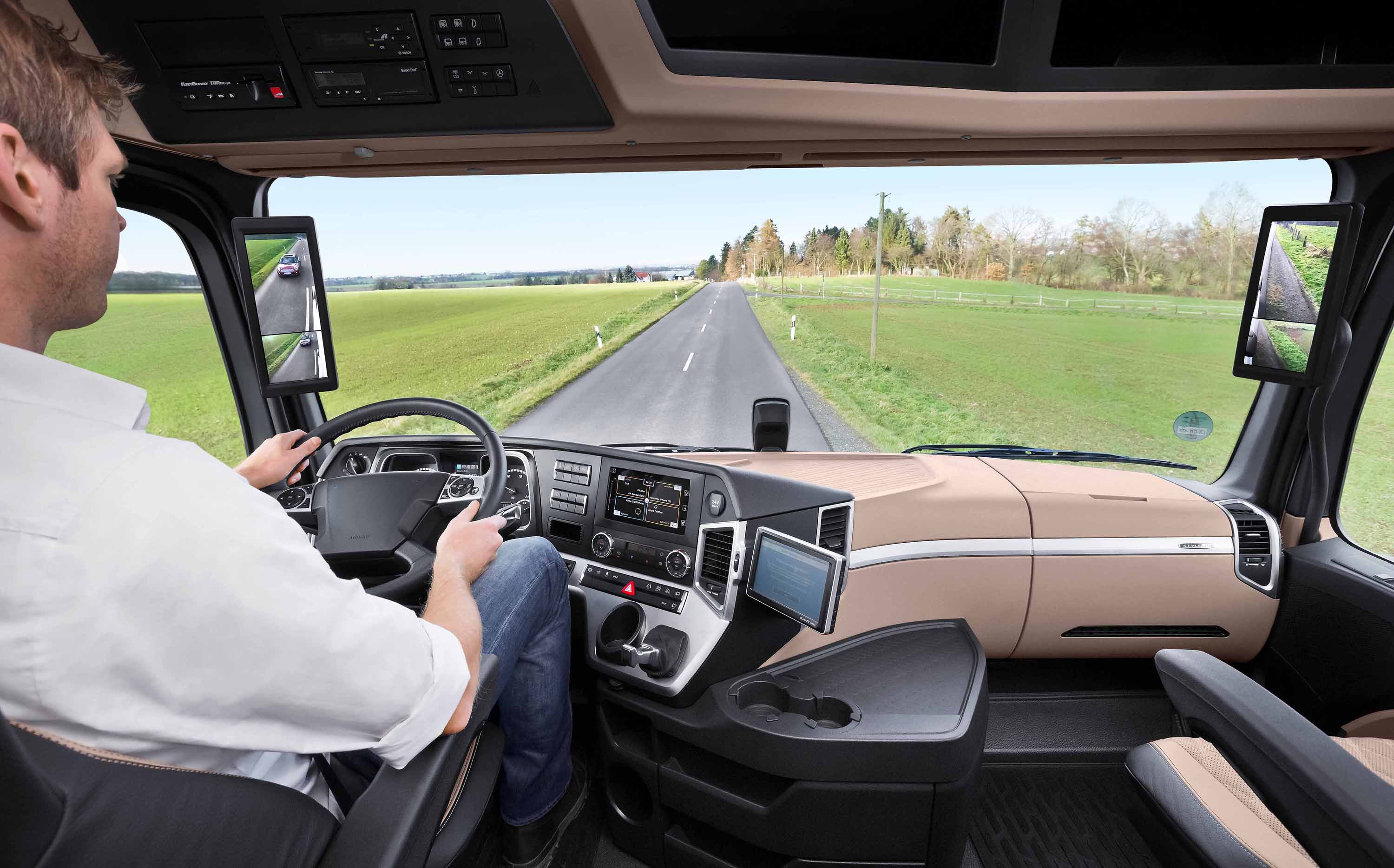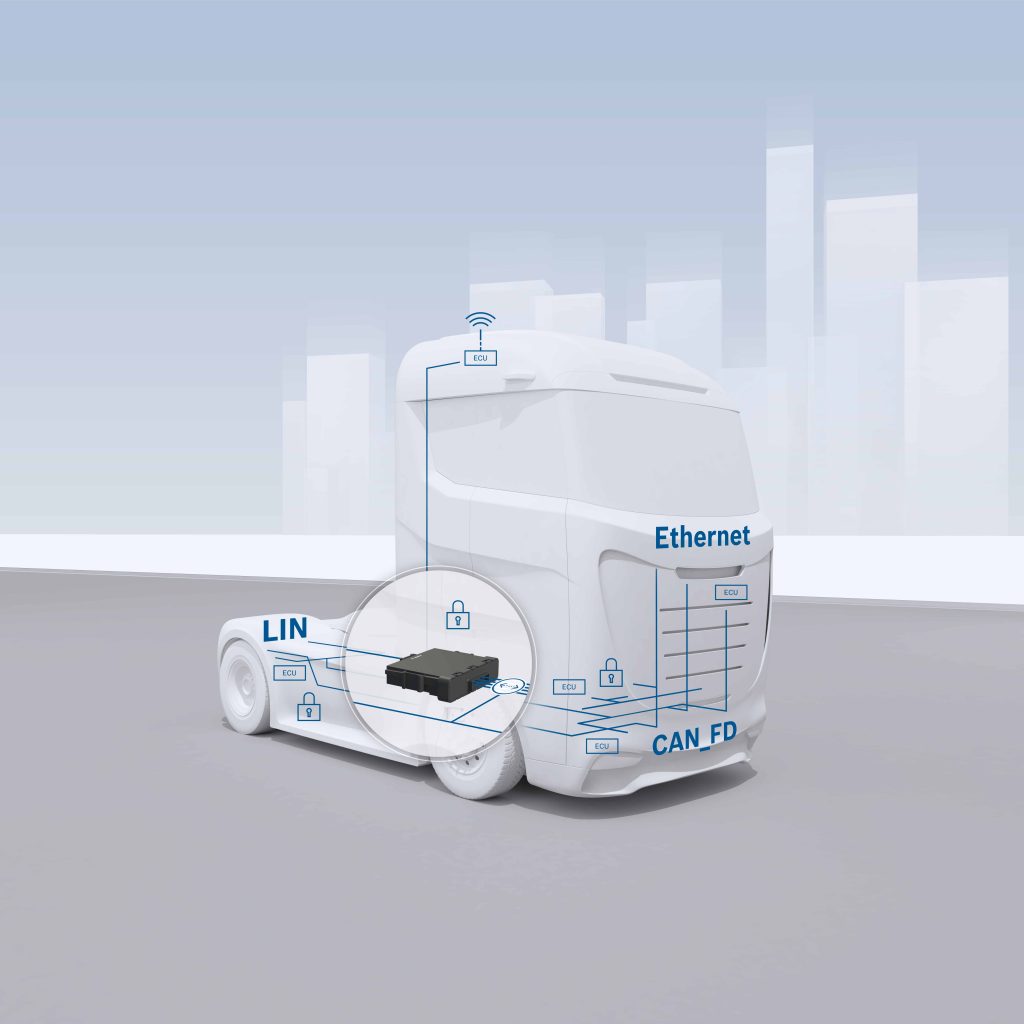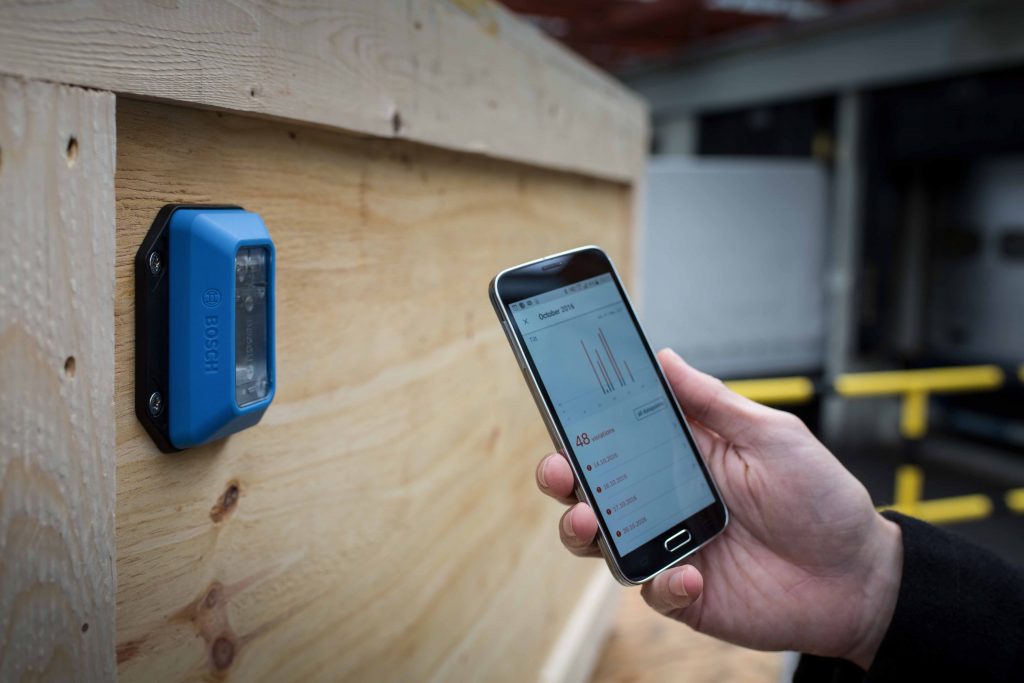Cutting costs, improving logistics chains, and making drivers’ lives easier: with technology to automate, connect, and electrify commercial vehicles, Bosch is improving efficiency and safety in logistics. At the 67th IAA Commercial Vehicles in Hannover, the supplier of technology and services is presenting its innovations for tomorrow’s freight traffic. You can find Bosch at booth A01 in hall 16.
New connected services are making life easier for truck drivers and logistics specialists
Connectivity platform for cloud-based services: Bosch uses a new connectivity platform to connect commercial vehicles throughout their service life, providing the technological foundation for such cloud-based services as predictive diagnostics and over-the-air software updates. The platform has two main components: the basic software module is the secure communication interface between the vehicle, the cloud, and the services, while the data management module enables commercial vehicle manufacturers or fleet managers to organize vehicle data, analyze it, and keep the vehicle software continuously updated.
Predictive diagnostics: Vehicle downtime is usually unplanned and, particularly in the case of commercial vehicles, often results in significant economic damage. Bosch’s predictive diagnostics registers and evaluates vehicle component and system states and continuously reports them to the cloud. Based on this data, faults can often be predicted and thus resolved in time. This reduces maintenance and service costs for commercial vehicles, and the lower number of breakdowns increases their availability.
Electronic horizon: In the future, Bosch’s electronic horizon will become smarter with every trip. This service is based on high-definition maps with topographical data for the route ahead. Engine and transmission management then takes this data into account in order to select the most efficient driving strategy possible and further reduce consumption. The electronic horizon has been available for several years, but now Bosch is enhancing it. In the future, the function will determine whether the information stored in the map agrees with actual conditions on the road. For example, if the vehicle camera detects a speed limit sign on the road that specifies 30 kph, but the map says the limit is 50 kph, the truck’s navigation system will learn the new speed. In the future, this information will also be shared with other trucks via the cloud. The smart electronic horizon is set to go into production in early 2019.
Freight monitoring: Where are my goods and how are they doing? These are questions logistics specialists and customers ask. Bosch’s Transport Data Logger provides answers and makes the goods supply chain transparent. Measuring around 10 square centimeters, the small box with integrated sensors monitors the transport of sensitive goods and measures temperature, humidity, tilt, and shock events during transport. The measured values are displayed in a smartphone or tablet app and documented. If certain values are exceeded, the app triggers an alarm and potential damage to the goods can be detected early on and attributed to the person who caused it.
Central gateway: The central gateway controls data exchange between the ECUs in the truck and the outside world across all bus systems, and is therefore the central communication node for connected commercial vehicles. Modern transmission and encryption technologies make the data exchange particularly secure. They prevent unlawful access to the vehicle network using firewalls or the intrusion detection system developed by Bosch subsidiaries ETAS and ESCRYPT.
Digital side-view mirrors and displays improve the driving experience and enhance safety
Digital side-view mirrors: The digital mirror camera system developed by Bosch and Mekra Lang for side-view mirrors is going into production in 2019. It replaces the two large mirrors on the outside of the vehicle’s cab with video sensors, which reduces drag and lowers fuel consumption by as much as 2 percent. Images from the cameras are displayed in real time on high-resolution monitors in the driver’s cab. The system adjusts the monitor display according to situation:
long view on the freeway, large angle of view in city traffic, and high contrast for night driving. And thanks to Bosch’s EasyFit camera system, existing truck fleets can also be retrofitted with digital side-view mirrors. This system is based on four ultra-wide-angle cameras that show a 360-degree view around the vehicle.
Digital instrument cluster: To ensure easy and distraction-free operation of the ever expanding connectivity, driver assistance, and infotainment functions in trucks, Bosch is bringing digital instrument clusters into the cockpit. In addition to the conventional speedometer view, the display will show function information, route planning graphics, and images from the reversing camera or night-vision device, prioritized according to the driving situation. Drivers are always shown exactly the information they need at any given moment, which reduces complexity and allows them to focus entirely on the road.






